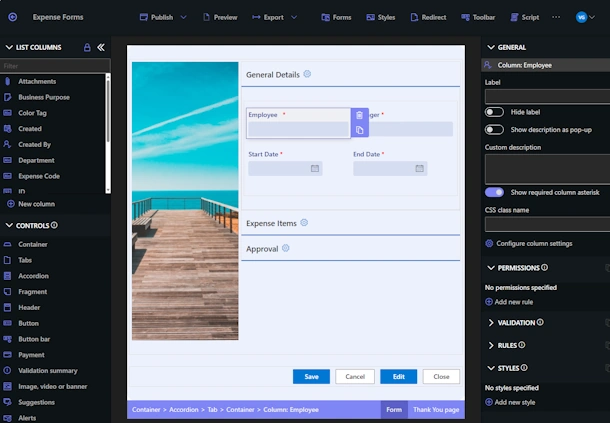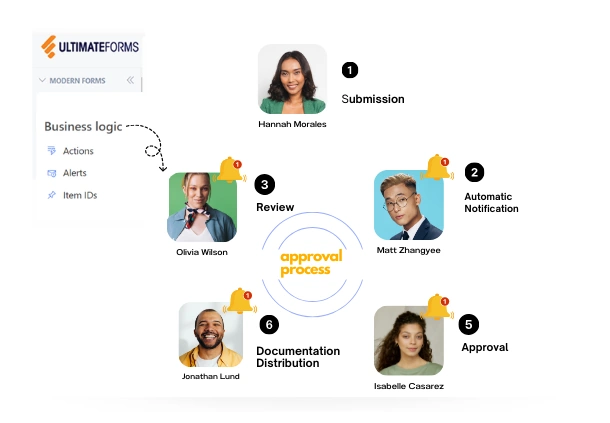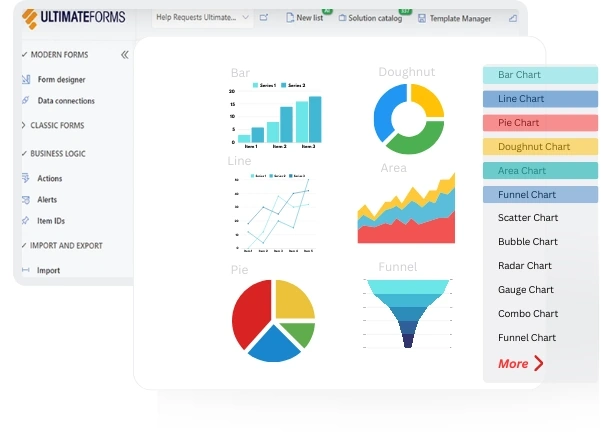Improving SharePoint Solutions Through Team Collaboration
For organizations that rely on SharePoint, team coordination and structured collaboration are essential for building scalable and successful solutions. Over the past 15 years working with hundreds of SharePoint customers, I've witnessed that while there's no single recipe for success, certain strategies consistently lead to better results. If your goal is to boost collaboration, streamline employee tracking, and enhance your SharePoint environment, these strategies will provide a clear roadmap to success.
Key Strategies to Boost Team Collaboration
1. Regular Planning Sessions
Nothing hinders collaboration more than a lack of communication. Set recurring planning sessions dedicated to SharePoint development. These meetings are crucial not just for project updates but for aligning on goals, sharing new ideas, and addressing challenges early. Planning sessions help maintain a consistent rhythm, ensuring that SharePoint projects move forward collaboratively and efficiently.
2. Create a SharePoint Knowledge Base
A centralized knowledge base within SharePoint is a powerful tool for sharing internal expertise. Use a SharePoint list to store tutorials, tips, solution documentation, and notes from project experiences. Encourage team members to contribute by offering incentives or recognition for their efforts. This shared space becomes invaluable as your team grows and tackles new challenges.
3. Group Training for Consistency
Self-paced training often gets sidelined by daily responsibilities. Schedule training sessions as a group to guarantee participation and eliminate distractions. SharePoint is a continuously evolving platform, and even experienced users benefit from periodic training. Group training fosters a shared understanding and encourages real-time knowledge transfer.
4. Use Sandbox Environments for Hands-On Learning
Empower each team member with a sandbox site to test, explore, and share their own solutions. These practice environments are vital for hands-on learning and demonstrating reusable components before deploying them to production. This also builds confidence in newer team members and encourages experimentation.
5. Promote Form Building for All
Don't limit form creation to one expert. With tools like Ultimate Forms, any team member can build forms without writing code. This no-code approach democratizes solution creation, prevents bottlenecks, and ensures everyone can contribute meaningfully to the system.
6. Encourage Active Learning
Reading documentation or watching videos is a good starting point, but true understanding comes from doing. Assign real-world tasks during training sessions that require building forms, workflows, and dashboards. Immediate feedback and group reviews help accelerate learning and reinforce retention.
7. Share Reusable Strategies
Reusable solutions save time and ensure consistency. Encourage team members to package and document their SharePoint components—like forms, views, and automation rules—for use across departments. This practice amplifies the impact of individual contributions and drives collective improvement. The Ultimate Forms Solution Catalog and Ultimate Forms Template Manager are the perfect tools to facilitate this process.
8. Value Every Contribution
Everyone brings unique insight to the table. Foster an inclusive environment where both advanced users and beginners feel empowered to share ideas. Often, newcomers offer fresh perspectives or identify gaps overlooked by more experienced colleagues.
9. Establish Team Standards
Inconsistent formatting and ad hoc development result in confusing and disjointed solutions. Define a style guide for branding, form design, list architecture, and process naming conventions. Unified standards ensure your SharePoint environment feels professional and is easier to manage.
10. Recognize Team Achievements
Celebrate wins—big and small. Recognizing successful launches, insightful contributions, or improved processes keeps morale high and motivates the team to continue innovating. A culture of appreciation enhances engagement and long-term participation.
How This Supports SharePoint-Based Solutions
These strategies don't just improve collaboration - they directly impact the effectiveness of your SharePoint solutions. A well-coordinated team can build advanced dashboards, automate workflows, and maintain scalable document libraries. SharePoint becomes a central platform for project management, employee onboarding, HR recordkeeping, and more. When team members contribute collectively, the quality and usability of your solutions improve dramatically.
Enhancing Task Management and Tracking
Task management in SharePoint thrives on structured collaboration. With consistent planning and standards, teams can create task lists with status indicators, deadline tracking, and role assignments. Automating these lists with Ultimate Forms Actions allows for real-time updates and automatic notifications.
Tracking becomes more effective when supported by data rollups and visual dashboards. Use tools like Ultimate Forms Rollup to aggregate progress across departments or projects. Each strategy mentioned earlier contributes to building a coherent, well-managed task environment that enhances accountability and performance.
Alignment with Human Resources Processes
SharePoint isn’t just for IT - it's a powerful tool for Human Resources. With the help of Ultimate Forms, you can automate:
- Employee onboarding workflows
- Leave and absence tracking
- Performance review documentation
- Policy acknowledgment forms
- Internal feedback surveys
HR professionals benefit from standardized forms, repeatable processes, and centralized tracking—all of which support legal compliance and employee satisfaction. These tools make it easy to build and modify HR systems in SharePoint without the need for external platforms.
Why a No-Code Template-Based Approach Works
One of the biggest advantages of using Infowise Ultimate Forms is the simplicity of setup. Downloadable templates provide plug-and-play solutions for forms, calendars, dashboards, and workflows. This eliminates the need to hire developers or spend weeks building solutions from scratch. Instead, anyone on your team can adapt a template to your specific needs.
These templates integrate easily into your existing SharePoint environment, instantly improving capability and professionalism. A few simple copy-and-paste steps enable you to deploy an entire solution, such as a training tracker or employee onboarding system.
Use Case Scenarios That Demonstrate Value
- Project Coordination: Use task lists and calendars to assign, track, and complete cross-functional initiatives with visual timelines.
- New Hire Onboarding: Automate welcome emails, training schedules, and document collection with workflows tied to HR checklists.
- Employee Performance Tracking: Create digital forms to collect reviews, goals, and feedback linked to individual user records.
- Customer Service Portals: Track support tickets using issue lists with automated notifications and escalation workflows.
- Training & Certification: Monitor course completion, certification renewals, and training requirements using dynamic dashboards.
Advanced Form Management Beyond Microsoft Forms
Microsoft Forms is too limited for complex organizational needs. It lacks conditional formatting, relational data linking, and automated processing. Ultimate Forms solves these limitations with options like:
- Dynamic field visibility
- Signature collection with Signature Field
- Smart printing using Print Templates
- Importing external data with Ultimate Forms Import
- Email alerts and rules using Email Alerts
Compared to Microsoft Power Apps, Ultimate Forms offers a dramatically easier learning curve. There’s no code, no app studio, and no hidden complexity—just intuitive setup with immediate results. Teams can create high-functioning, customized SharePoint forms in a fraction of the time.
Final Thoughts
These ten strategies are more than just recommendations—they are foundational practices that can elevate your SharePoint experience. By focusing on collaboration, enabling broad participation, and leveraging easy-to-use tools like those from Infowise Solutions, your team will be empowered to create and manage sophisticated solutions with minimal friction. Start small, adopt shared practices, and expand as your team gains confidence. SharePoint becomes exponentially more powerful when your people work together.
Add your comment





